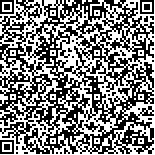下载中心
优秀审稿专家
优秀论文
相关链接
摘要

垄行种植是果园及农作物的常见种植结构,其冠层比连续和离散植被冠层具有更强的热辐射各向异性,开展垄行植被冠层的热辐射方向性校正对干旱监测等应用具有重要意义。热红外核驱动模型是热辐射方向性校正的基础,但现有核驱动模型在垄行植被冠层中的拟合精度未被讨论过。本文以在法国波尔多获取的两组不同朝向葡萄园冠层航空实测方向性特征为基础,对比分析了现有8个模型的拟合精度(含隶属可见光近红外核驱动建模扩展框架的Ross-Li、LSF-Li模型及隶属热红外核驱动建模通用框架的Vinnikov、RL、Vinnikov-RL、Vinnikov-Chen、LSF-RL、LSF-Chen模型),结果表明现有模型均无法拟合出垄行植被的行效应特征,精度整体较低(RMSE高达2 K,R2低于0.7)且各个模型之间的拟合能力差异小,现有热红外核驱动模型均不适用于垄行植被冠层,有待在核驱动建模通用框架下发展可刻画垄行特征的新核。
The ignoring of the land surface thermal radiation directionality hampered the accuracy improvement of current land surface temperature products. It is urgent to develop a practical method to correct the angle effect for the products. More and more attention has been paid to the thermal infrared kernel-drive model because of its simplicity and accuracy. For natural surface, there are widely used eight kernel-driven models. Their fitting abilities over continuous and discrete canopies is well-known, however, no report discussed their performances over the important row-planted stage. The objective of this study is to assess the fitting abilities of all existing eight thermal infrared kernel-driven models over row-planted canopies based on airborne measured datasets.Two multi-angle directional anisotropy datasets over row-planted vineyards were obtained through the airborne observation in several flights. The experiment sites were located at Chateau Talbot, Médoc region, 30 km north of Bordeaux, France. All the measurements were combined and corrected from nadir temperature to derive the directional anisotropy at 1° steps for view zenith angle (0°—60°) and view azimuth angle (0°—360°). The multi-angle directional anisotropy values were used as input to estimate the kernel coefficients of two 3-parameter models within the traditional visible and near infrared framework (Ross-Li and LSF-Li), two 3-parameter models within the new thermal infrared framework (Vinnikov and RL), and four 4-parameter models within the new thermal infrared framework (Vinnikov-RL, Vinnikov-Chen, LSF-RL, LSF-Chen). Then, the forward simulated directional anisotropy values of all models were compared taking the airborne measured values as reference.Results show that all eight kernel-driven models cannot simulate the row-structure signatures (i.e., axisymmetric feature). They have an overall large RMSE about 2 K and a low R2 less than 0.7. In addition, the RMSE differences between the models are small. For the east-west canopy, RMSE is between 1.930 K and 2.153 K, R2 is between 0.616 and 0.691. For the south-north canopy, RMSE is between 2.005 K and 2.353 K, R2 is between 0.600 and 0.670. Therefore, developing a new specific kernel for row-structure to improve the fitting ability is demanded in the thermal infrared band currently.

